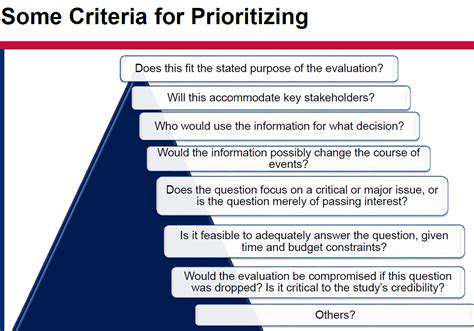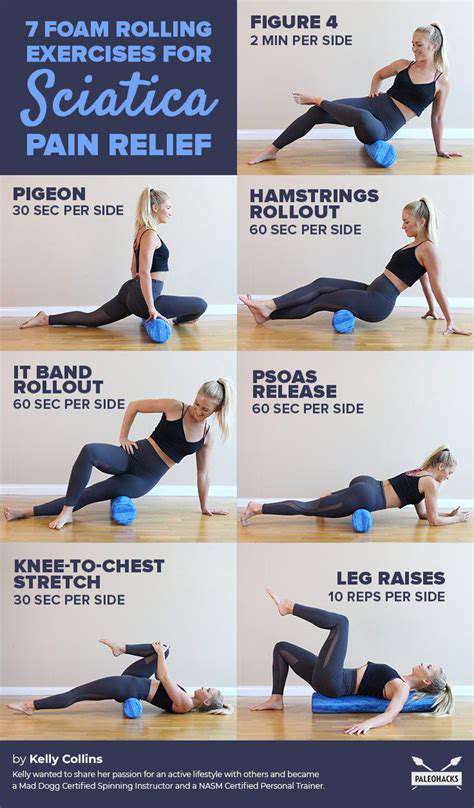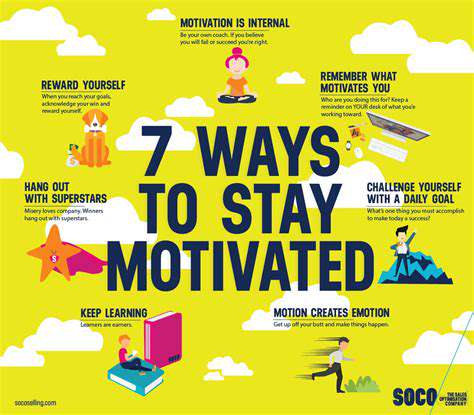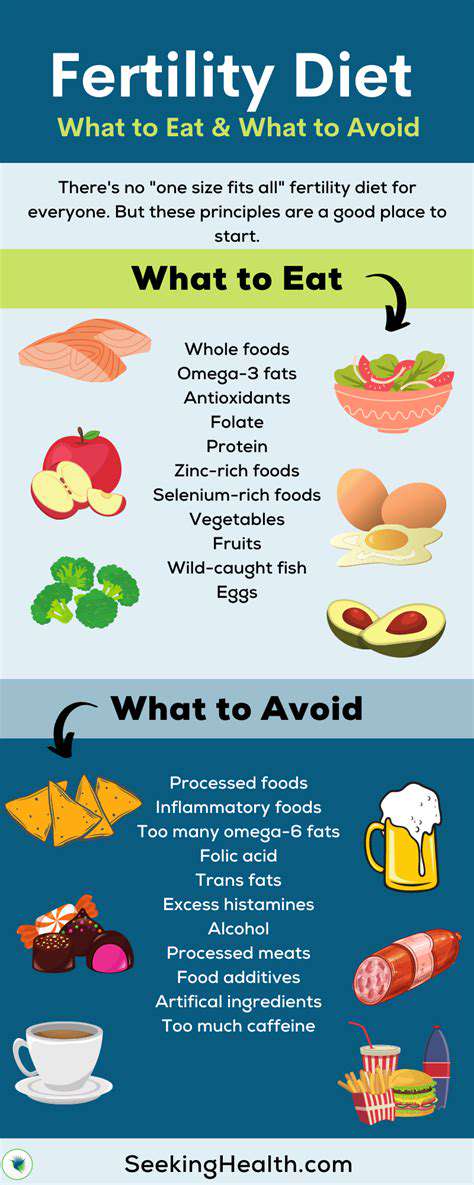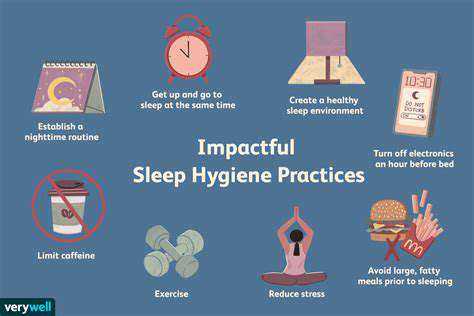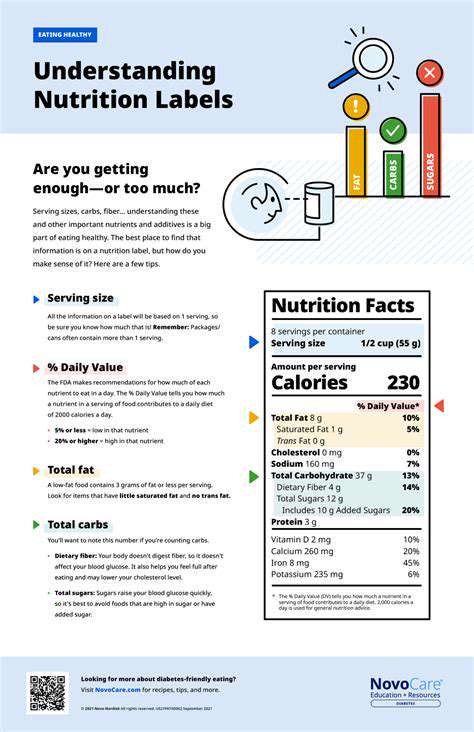Best Habits for Improving Your Productivity
Setting Realistic Goals and Priorities
Effective time management hinges on establishing realistic goals and priorities. Instead of overwhelming yourself with a laundry list of tasks, break down larger projects into smaller, manageable steps. This process allows you to focus on one thing at a time, reducing mental clutter and increasing your ability to concentrate. Prioritize tasks based on urgency and importance using techniques like the Eisenhower Matrix. This helps you distinguish between tasks that need immediate attention and those that can be scheduled for later, preventing procrastination and maximizing productivity.
Don't just aim for a lot; aim for impactful results. Consider the potential value of each task and assign a priority level accordingly. If you're aiming to improve your efficiency, this prioritization is crucial. This intentional approach fosters a sense of accomplishment and reduces the likelihood of feeling overwhelmed by the sheer volume of tasks.
Creating a Daily Schedule and Time Blocking
A well-structured schedule is a cornerstone of efficiency. Allocate specific time blocks for different activities, ensuring dedicated time slots for both focused work and breaks. This structured approach minimizes distractions and helps you stay on track. Be sure to include buffer time between activities to account for unexpected delays or interruptions. A flexible schedule allows for adjustments without derailing your entire day.
Time blocking is more than just scheduling; it's about planning your day with intention. It's a powerful tool for optimizing your time and focusing on high-impact activities. This structured approach helps you avoid the common pitfall of getting bogged down in less important tasks, ensuring that your time is spent wisely on the most valuable activities.
Utilizing Productivity Techniques and Tools
Explore various productivity techniques, such as the Pomodoro Technique, to enhance focus and concentration. These techniques can be easily implemented and help you maintain consistent momentum throughout the day. Experiment with different methods to find what works best for you. The key is to find a system that aligns with your work style and helps you stay productive without feeling overwhelmed.
Leverage technology and productivity tools to streamline your workflow. Utilize calendars, task management apps, or project management software to organize tasks, set reminders, and track progress. These tools offer a visual representation of your schedule and tasks, allowing you to see your progress and identify potential bottlenecks in your workflow. This visual aspect can be incredibly helpful for staying organized and on track.
Effective Break Strategies and Mindfulness Practices
Integrating regular breaks into your schedule is vital for maintaining focus and preventing burnout. Short breaks can significantly improve your concentration and energy levels throughout the day. Taking a few minutes to step away from your work allows your mind to rest and recharge, leading to increased productivity in the long run. Breaks allow your mind to process information and prepare for the next task, preventing mental fatigue.
Incorporate mindfulness practices, such as meditation or deep breathing exercises, into your daily routine. These practices can help reduce stress, improve focus, and enhance overall well-being. Mindfulness techniques provide a mental reset, allowing you to approach your tasks with renewed clarity and a sense of calm. Taking time to center yourself can lead to more effective and efficient work throughout the day.
Mastering Time Management Techniques: Optimize Your Workflow
Prioritizing Tasks for Maximum Productivity
Effective time management hinges on prioritizing tasks. Identifying the most crucial and urgent tasks allows you to focus your energy and efforts where they will yield the greatest results. This involves analyzing deadlines, evaluating the impact of each task, and understanding the dependencies between different projects. By prioritizing effectively, you create a roadmap for your day, ensuring that critical elements receive the attention they need without getting bogged down in less important activities.
A popular technique for prioritizing is the Eisenhower Matrix, which categorizes tasks based on urgency and importance. This helps you determine which tasks require immediate attention, which can be delegated, and which can be scheduled for later. By implementing a consistent prioritization method, you can streamline your workflow and maximize productivity throughout the day.
Utilizing Time Blocking for Focused Work
Time blocking is a powerful time management strategy that involves scheduling specific blocks of time for specific tasks. This structured approach creates dedicated time slots for work, allowing you to concentrate on one task without distractions. By allocating specific time blocks for different activities, you maintain focus and avoid the common pitfalls of multitasking. This organized approach promotes efficiency and reduces the feeling of being overwhelmed.
When implementing time blocking, consider the varying demands of your tasks. Some tasks might require deep focus, while others can be more flexible. By scheduling specific time slots for these different task types, you can optimize your workflow and ensure that you allocate appropriate time for each activity. This creates a roadmap for your day, promoting efficiency and reducing wasted time.
Breaking Down Large Tasks into Smaller Steps
Large, complex tasks can be daunting and often lead to procrastination. Breaking down these tasks into smaller, more manageable steps is a crucial time management technique. This process allows you to tackle the task in incremental chunks, which makes the overall goal feel less overwhelming. By dividing a large project into smaller, more achievable steps, you create a sense of accomplishment with each completed sub-task, ultimately motivating you to continue.
Leveraging Technology for Streamlined Organization
Modern technology offers a wealth of tools and applications to enhance time management. Utilizing digital calendars, task management apps, and project management software can streamline your workflow and help you stay organized. These tools allow you to set reminders, create to-do lists, and track progress on projects, ensuring that you remain on track and meet deadlines. By integrating these tools into your routine, you can improve efficiency and reduce the risk of missed deadlines.
Many apps offer features like task prioritization, reminders, and collaborative tools. Using these features allows you to stay organized and efficiently manage your tasks. This technology-driven approach to time management allows you to adapt and optimize your work style to better suit your needs. This allows you to stay informed and productive in today's fast-paced world.
Implementing Effective Delegation and Outsourcing Strategies
Delegation and outsourcing are effective time management techniques that can significantly increase efficiency. Identifying tasks that can be delegated to colleagues or outsourced to freelancers allows you to focus on your core responsibilities and expertise. This strategy frees up valuable time and resources, enabling you to concentrate on high-impact activities that directly contribute to your goals.
Delegation is about assigning tasks to others who have the necessary skills and knowledge. Outsourcing is about contracting out tasks to external providers. Both strategies allow you to maximize your time and energy while maintaining a high level of productivity. By effectively delegating or outsourcing tasks, you free yourself up to focus on higher-level activities and strategic initiatives.
Harness the Power of Focus and Concentration: Minimize Distractions
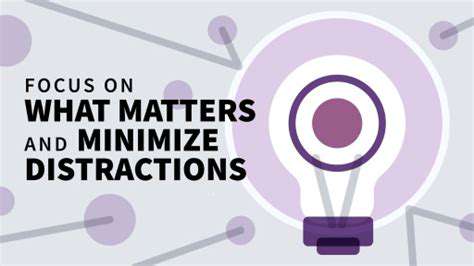
Harnessing Focus for Enhanced Productivity
Effective focus is a cornerstone of productivity. When you concentrate on a single task, your brain can delve deeper into the work, leading to greater efficiency and a higher quality of output. This focused approach minimizes distractions and allows you to allocate your mental resources effectively, ultimately leading to significant improvements in your overall work performance.
Understanding how to harness focus is crucial in today's fast-paced world. The ability to concentrate on a specific task, while ignoring irrelevant stimuli, is a highly valuable skill. This ability to filter out distractions allows for a more streamlined workflow and a decrease in errors.
Cultivating Mental Clarity
Mental clarity is the bedrock upon which focus is built. A clear mind allows you to think more effectively and make better decisions. This state of mental clarity is essential for tackling complex projects and maintaining sustained concentration. Techniques like mindfulness and meditation can significantly improve mental clarity and enhance your ability to focus.
Identifying and Eliminating Distractions
Distractions are the insidious enemies of focus. Identifying the specific sources of these distractions—whether it's social media notifications, noisy environments, or interruptions from colleagues—is the first step to mitigating their impact. Once identified, these distractions can be proactively managed or eliminated altogether, allowing for a more focused work environment.
Prioritizing Tasks for Optimal Focus
Prioritizing tasks is crucial for effective focus. By concentrating on the most important tasks first, you allocate your energy and attention to the activities that will yield the greatest results. This strategic approach ensures that your time and effort are directed toward high-impact activities, leaving you with more energy and focus to complete other tasks.
The Importance of Breaks and Rest
While focus is essential, it's equally important to incorporate regular breaks and rest periods into your workflow. Excessive focus without adequate rest can lead to burnout and decreased productivity. Taking short breaks allows your mind to refresh and recharge, preventing mental fatigue and ensuring that you return to your tasks with renewed energy and focus. This revitalization is crucial for maintaining sustained productivity.
The Role of External Factors in Focus
External factors play a significant role in our ability to focus. A comfortable and organized workspace, adequate lighting, and even the temperature of the room can all influence our concentration. Creating an environment conducive to focus is just as important as internal strategies. Environmental considerations can significantly impact our ability to concentrate and achieve our goals. A well-structured environment can be the catalyst that helps unlock your full focus potential.
A gentle touch, often overlooked in our fast-paced world, possesses a remarkable capacity for healing and well-being. From the simple act of holding a loved one's hand to a therapeutic massage, the power of touch can profoundly impact our emotional and physical states. It can foster a sense of connection and belonging, reducing feelings of isolation and anxiety. The warmth and pressure of a touch can stimulate the release of endorphins, natural mood boosters that alleviate pain and promote relaxation. This physiological response is particularly valuable in managing stress and promoting overall health.
Embrace Continuous Improvement: Adapting and Refining Your Strategies
Defining Continuous Improvement
Continuous improvement, at its core, is a multifaceted approach to enhancing processes, products, and services over time. It's not a one-time fix but a commitment to ongoing refinement, driven by a desire to identify and eliminate inefficiencies, improve quality, and ultimately achieve better outcomes. This iterative process involves systematically evaluating current practices, identifying areas for improvement, and implementing changes to achieve optimal performance.
Adopting a continuous improvement mindset requires a willingness to embrace feedback, both from internal stakeholders and external customers. It necessitates a culture of proactive problem-solving and a commitment to learning from both successes and failures. This approach fosters a dynamic environment where adjustments and refinements are not viewed as setbacks, but as essential steps towards achieving excellence.
Identifying Areas for Improvement
Identifying areas for improvement is crucial to the continuous improvement process. This involves a deep dive into existing processes, products, or services. Thorough data analysis, including performance metrics, customer feedback, and employee input, is essential. By understanding what is currently working well and what areas are struggling, you can pinpoint specific areas that need attention.
A key element is understanding customer needs and expectations. Gathering feedback through surveys, interviews, and focus groups can highlight pain points and opportunities for improvement. Analyzing customer data allows for a more nuanced understanding of what needs to be addressed.
Implementing Change Effectively
Implementing changes effectively is vital for ensuring that the continuous improvement efforts translate into tangible results. A well-defined plan that outlines the steps, timelines, and responsibilities is necessary. This plan should be communicated clearly to all stakeholders involved to ensure everyone understands their role in the process.
Careful consideration must be given to the potential impact of changes on various stakeholders. Addressing potential resistance and concerns proactively will increase the likelihood of successful implementation. Furthermore, creating a supportive environment where employees feel comfortable suggesting improvements and taking calculated risks is essential.
Utilizing Data-Driven Decisions
Data plays a crucial role in supporting continuous improvement initiatives. Gathering and analyzing relevant data allows for informed decision-making based on factual evidence, not assumptions or guesswork. This data-driven approach ensures that improvements are targeted and effective.
Tracking key performance indicators (KPIs) and analyzing trends allows for the identification of patterns and areas for optimization. The insights gained from data analysis can be used to refine strategies and processes, leading to significant improvements over time.
Building a Culture of Continuous Improvement
Establishing a culture of continuous improvement requires a shift in mindset, from a reactive to a proactive approach. This involves fostering a learning environment where employees feel empowered to suggest and implement changes.
Open communication channels, recognition of contributions, and encouragement of experimentation are key to building a culture of continuous improvement. Leaders must model this behavior, demonstrating a commitment to ongoing learning and refinement.
Measuring and Evaluating Results
Measuring and evaluating the results of continuous improvement efforts is essential to determine the effectiveness of implemented changes. This involves establishing clear metrics and benchmarks to track progress and identify areas for further improvement. Regularly reviewing and analyzing data is crucial to determine whether the desired outcomes are being achieved.
Adjusting strategies based on the evaluation of results is another critical step. If certain improvements are not yielding the expected results, adjustments are necessary to ensure that the efforts are aligned with the goals. This iterative process allows for constant optimization and refinement.
Sustaining the Momentum
Sustaining the momentum of continuous improvement is crucial for long-term success. It requires ongoing commitment and dedication from all stakeholders. Regular review meetings, training programs, and clear communication are vital to maintaining the drive for improvement.
Leaders should reinforce the importance of continuous improvement by emphasizing its role in organizational success. This ongoing reinforcement creates a culture of constant learning and adaptation, driving long-term growth and sustainability.
Read more about Best Habits for Improving Your Productivity
Hot Recommendations
-
*Guide to Managing Gout Through Diet
-
*Best Habits for Financial Well being
-
*How to Build a Routine for Better Mental Health
-
*How to Eat Healthy on a Budget [Tips & Meal Ideas]
-
*Guide to Practicing Self Acceptance
-
*How to Incorporate More Movement Into Your Day
-
*Guide to Managing Chronic Pain Naturally
-
*Guide to Building a Reading Habit for Well being
-
*Top 5 Weight Loss Supplements That Actually Work
-
*Best Exercises for Postpartum Recovery [Beyond Abdominal Work]
